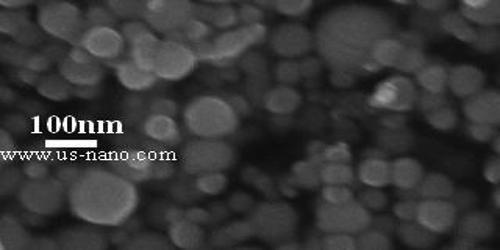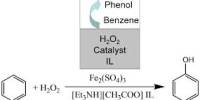Copper (Cu) Nanoparticles are black-brown spherical high surface area metal particles. A copper nanoparticle is a copper-based particle 1 to 100 nm in size. Nanoparticles are transferred to various substrates to be used in practical applications. A nanoparticle is a small particle that ranges between 1 to 100 nanometres in size. Like many other forms of nanoparticles, a copper nanoparticle can be formed by natural processes or through chemical synthesis. They are graded as highly flammable solids, therefore they must be stored away from sources of ignition.
Copper nanoparticles can be easily mixed with polymers and are relatively stable in terms of both chemical and physical properties. These nanoparticles are of particular interest due to their historical application as coloring agents and their modern-day biomedical ones. The synthesis of copper nanoparticles (Cu NPs) stable to chemical oxidation has attracted much attention due to their novel application possibilities.
Properties
- Molecular Weight: 63.55
- Appearance: Black-Brown
- Melting Point: 1083 °C
- Boiling Point: 2567 °C
- Density: N/A
- Bulk Density: 0.15 -0.35 g/cm3
- True Density: 8.96 g/cm3
- Size Range: 2-60 nm
Copper nanoparticles received much attention due to their high electrical conductivity, high melting point, low electrochemical migration behavior, and low cost. The property mainly depends on the synthesis route and its process parameters. One of the key benefits of nanomaterials is that their properties differ from the bulk material of the same composition.
Applications
Copper nanoparticles can be manufactured using numerous methods. The electrodeposition method is considered by many as one of the most suitable and easiest. They are mainly used as a biocide and for electrical applications.
Copper nanoparticles with great catalytic activities can be applied to biosensors and electrochemical sensors. Redox reactions utilized in those sensors are generally irreversible and also require high overpotentials (more energy) to run. In fact, the nanoparticles have the ability to make the redox reactions reversible and to lower the overpotentials when applied to the sensors. This is supported, for example, by solutions or pastes made of copper nanoparticles, which can be selectively applied through the novel printing process. Copper nanoparticles application research is ongoing to discover their potential dielectric, magnetic, electrical, optical, imaging, catalytic, biomedical, and bioscience properties.
One of the examples is a glucose sensor. With the use of copper nanoparticles, the sensor does not require any enzyme and therefore has no need to deal with enzyme degradation and denaturation. Moreover, using nanoparticles, native amino acids can be detected. A copper nanoparticle-plated screen-printed carbon electrode functions as a stable and effective sensing system for all 20 amino acid detection.
















